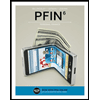
a.
Debt ratio:
Debt ratios are expressed to determine the company’s ability to pay off its entire liabilities through the resources that it owns. It means that this ratio will determine the future solvency of the company.
Requirement 1
To compute:
The debt ratio of S for the current year and the prior year.
b.
Financial leverage:
Financial leverage refers to the company’s obligations on the company’s assets. The more the financial leverage of an entity, the greater will be the risk for the company for future sustainability. As more financial leverage attracts more fixed costs, it is always advisable for every company to check for its financial leverage to be under the controllable level.
Requirement 2
Whether S’s financial leverage increased or decreased in the current year.
c.
Financial leverage:
The more the financial leverage of an entity, the greater will be the risk for the company for future sustainability. As more financial leverage attracts more fixed costs, it is always advisable for every company to check for its financial leverage to be under the controllable level. The companies with more leverage will be less attracted in the eyes of the investors as it will prove to be a risky investment in terms of payment of interest and repayment of capital.
Requirement 3
Whether S is more or less risky than A and G in terms of debt ratio.
Want to see the full answer?
Check out a sample textbook solution
Chapter 2 Solutions
FINANCIAL AND MANAGERIAL ACCOUNTING
- New revenue recognition standard brings in significant changes the way a company should determine the amount of revenue to report on its financial statements. As an auditor what challenges or issues are in understanding the five step revenue recognition model as implemented by a client and how can they assess the risk of material misstatement in revenue?arrow_forwardWhat was the allocation to product z?arrow_forwardI am trying to find the accurate solution to this financial accounting problem with the correct explanation.arrow_forward
- Nonearrow_forwardIndira Products has provided the following data for the month of August: a. The balance in the Finished Goods inventory account at the beginning of the month was $65,000 and at the end of the month was $29,500. b. The cost of goods manufactured for the month was $210,000. c. The actual manufacturing overhead cost incurred was $71,800 and the manufacturing overhead cost applied to Work in Process was $75,200. d. The company closes out any underapplied or overapplied manufacturing overhead to the cost of goods sold. What is the adjusted cost of goods sold that would appear on the income statement for August?arrow_forwardLand should be capitalized at what amountarrow_forward
 PFIN (with PFIN Online, 1 term (6 months) Printed...FinanceISBN:9781337117005Author:Randall Billingsley, Lawrence J. Gitman, Michael D. JoehnkPublisher:Cengage Learning
PFIN (with PFIN Online, 1 term (6 months) Printed...FinanceISBN:9781337117005Author:Randall Billingsley, Lawrence J. Gitman, Michael D. JoehnkPublisher:Cengage Learning Pfin (with Mindtap, 1 Term Printed Access Card) (...FinanceISBN:9780357033609Author:Randall Billingsley, Lawrence J. Gitman, Michael D. JoehnkPublisher:Cengage Learning
Pfin (with Mindtap, 1 Term Printed Access Card) (...FinanceISBN:9780357033609Author:Randall Billingsley, Lawrence J. Gitman, Michael D. JoehnkPublisher:Cengage Learning EBK CONTEMPORARY FINANCIAL MANAGEMENTFinanceISBN:9781337514835Author:MOYERPublisher:CENGAGE LEARNING - CONSIGNMENT
EBK CONTEMPORARY FINANCIAL MANAGEMENTFinanceISBN:9781337514835Author:MOYERPublisher:CENGAGE LEARNING - CONSIGNMENT Intermediate Financial Management (MindTap Course...FinanceISBN:9781337395083Author:Eugene F. Brigham, Phillip R. DavesPublisher:Cengage Learning
Intermediate Financial Management (MindTap Course...FinanceISBN:9781337395083Author:Eugene F. Brigham, Phillip R. DavesPublisher:Cengage Learning





